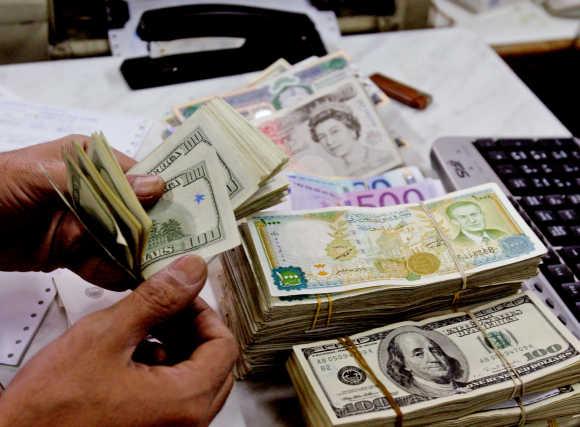The crackdown on black money has manifested itself in a doubling in outward remittances as black money attempts to leave India, say Saurabh Mukherjea and Ritika Mankar-Mukherjee.

When the black economy of a country is equal to around a fifth of its gross domestic product (GDP), the matter requires serious debate and unpopular methods to tackle it.
The National Democratic Alliance (NDA) government has clearly shown that it has the resolve to push through tough measures aimed at tackling India’s large but amorphous black economy.
A range of studies suggests that the majority of this black money in India is locked up in physical assets such as real estate and gold.
Our sources are unanimous in saying that the demand for these two assets has been jammed fairly comprehensively since the third quarter of FY16 owing to the Narendra Modi-led administration’s crackdown on black money.
Key measures taken in this regard include the passage of the Black Money Act, 2015, as well as the need for a PAN card for cash transactions exceeding specific thresholds.
Besides the fall in demand for real estate and gold, the government’s crackdown on black money has triggered four macroeconomic trends.
First, the increased fear of scrutiny of money held in the banking system has meant that there has been a marked increase in the preference for hard cash - cash with the public has risen from four per cent of GDP in May 2014 to nearly six per cent in March 2016.
While several bankers, including the Reserve Bank of India governor, have said that part of the surge in currency with the public is due to multiple state elections that is unlikely.
This is evident from the fact that even when the last general elections took place (May 2014) currency with the public did not rise as much as it did in the second half of FY16.
Second, even as currency with the public continues to rise, correspondingly and unexpectedly there has been a decline in the usage of formal banking channels (ironically, at a time when nearly every household in India has a bank account).
This is evident from the slide in bank deposit growth, which hit a six-decade low in FY16.
The collapse in deposit growth was in all probability exacerbated by the fact that the quantum of black money in the banking system entering via the deposits route has declined.
The decline in the desire to use formal banking channels is also evident in a sharp drop in the growth of real-time gross settlement system transaction volumes under the NDA regime.
Furthermore, the growth rate of the use of debit cards at the point of sale has also lowered in the last two years.
Third, the crackdown on black money has manifested itself in a doubling in outward remittances as black money attempts to leave India.
In all likelihood this surge has been the result of black money being remitted out of the country following the passage of the Black Money Act, 2015.
Last, as a result of the factors explained above, an increase in the cost of funds appears to have transpired both inside and outside the formal lending system.
While a crackdown on black money would have resulted in an increase in financial savings if economic momentum in India was picking up, the slowing economic momentum has meant that the black economy itself has found another stable equilibrium because the sub-investment grade borrowers (who are being denied credit by India’s busted banks) are tapping into informal/black lending channels to meet their capital requirements.
This, in turn, has meant that there has been an increase in the demand for black money (or increase in demand for black money savings).
This demand for credit - which formal banking channels are unable to meet - is being met by the growing pool of black money that is being squeezed out due to the government’s crackdown on this front.
This counter-intuitive development is worrying because it disintermediates the banking system and further compromises the RBI’s ability to control monetary policy transmission.
Unsurprisingly therefore, the RBI’s 150 basis points of repo rate cuts since January 2015 do not seem to have made any impact on economic growth.
Saurabh Mukherjea and Ritika Mankar-Mukherjee are CEOs (Institutional Equities) and senior economists respectively at Ambit Capital. They write in their personal capacities.